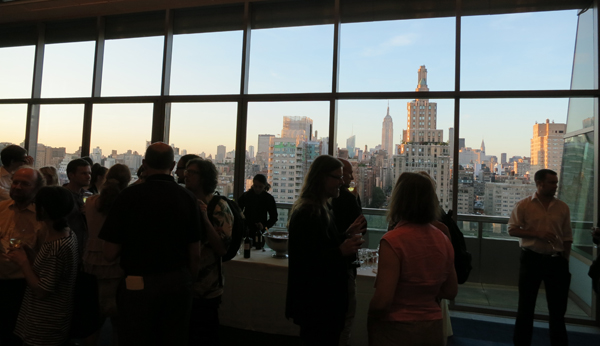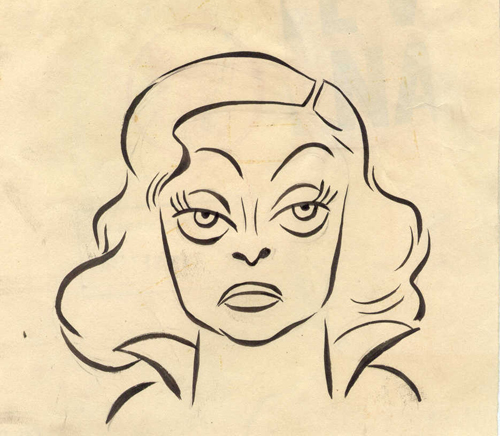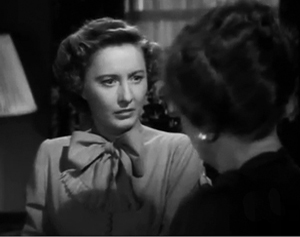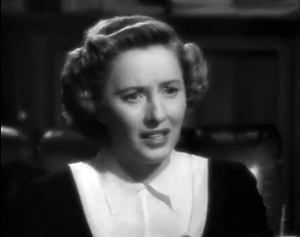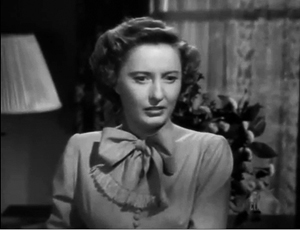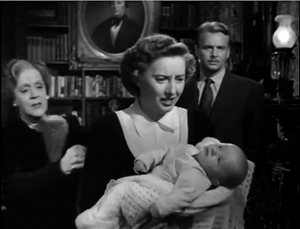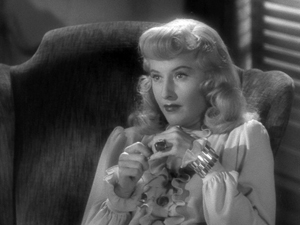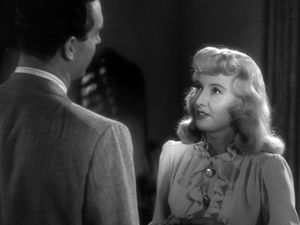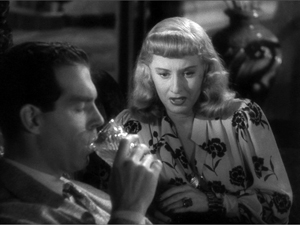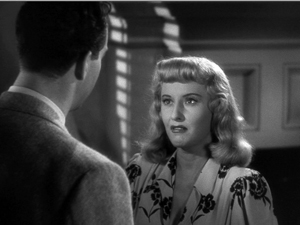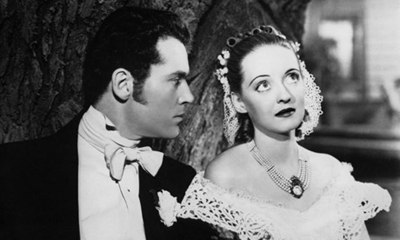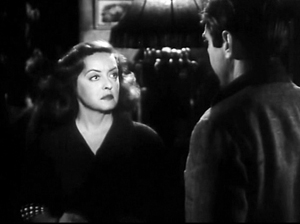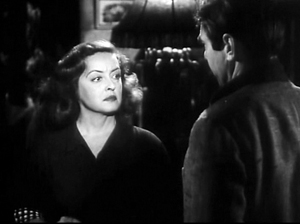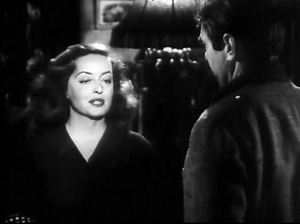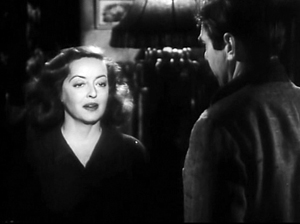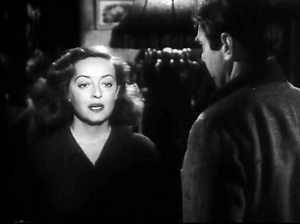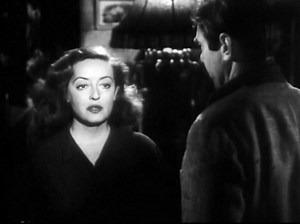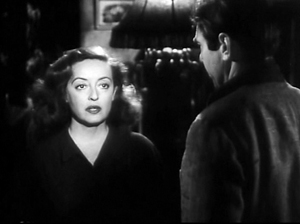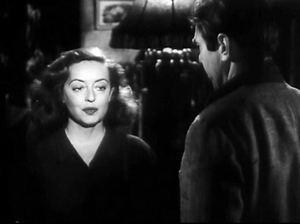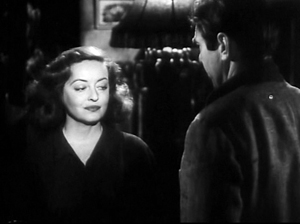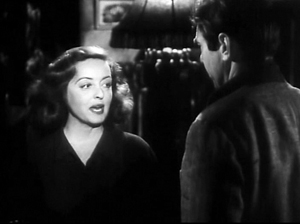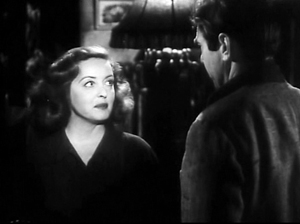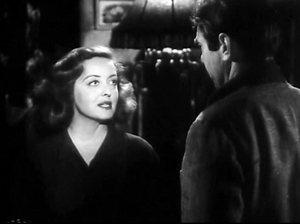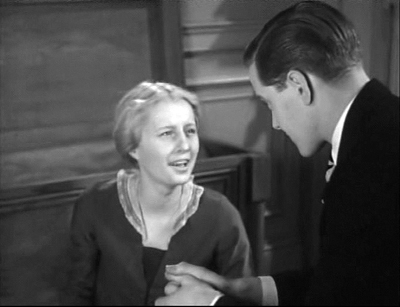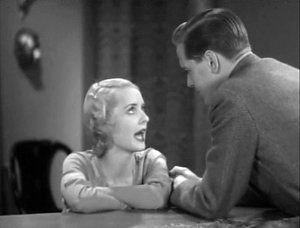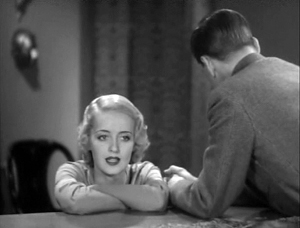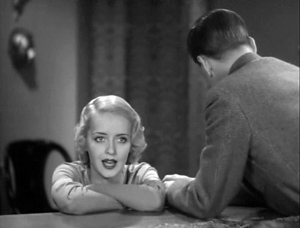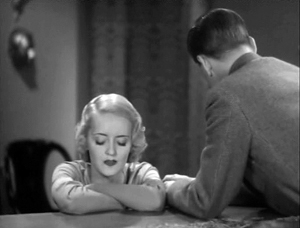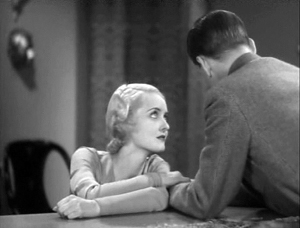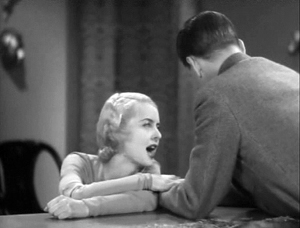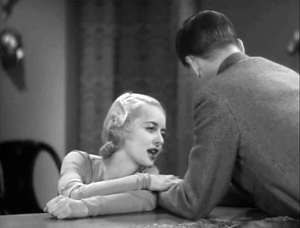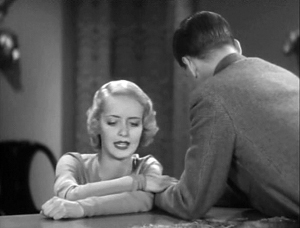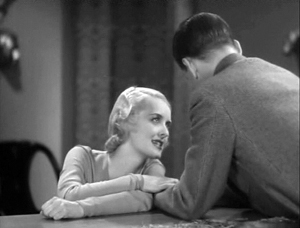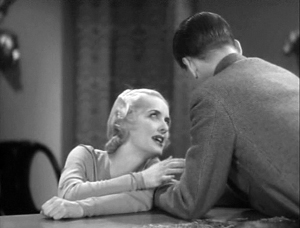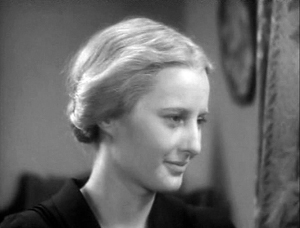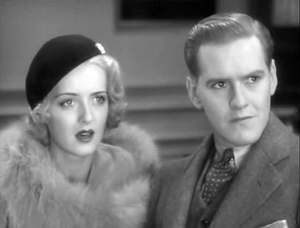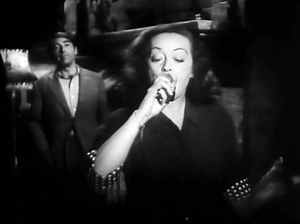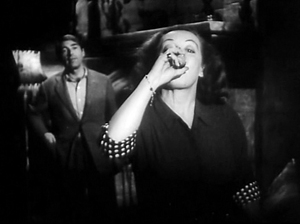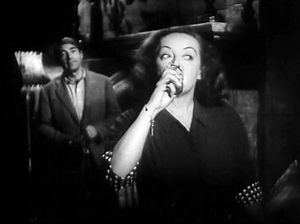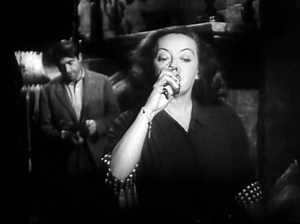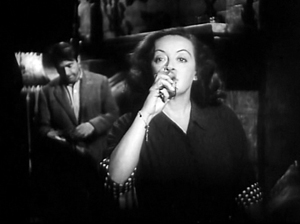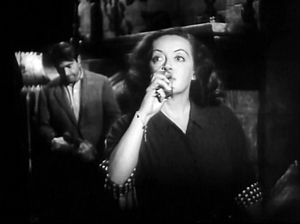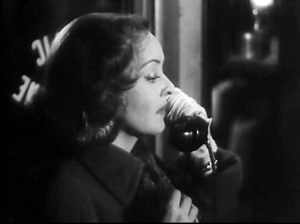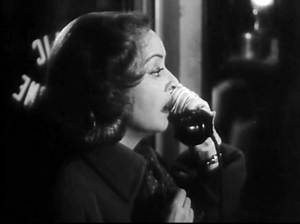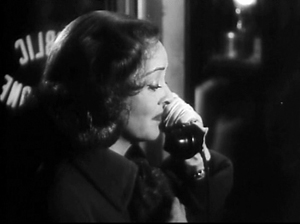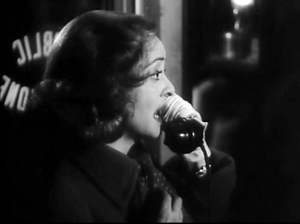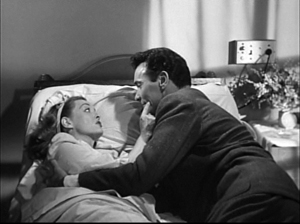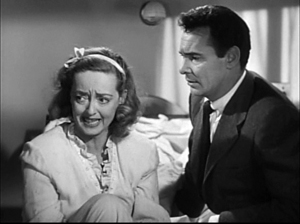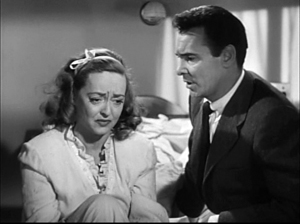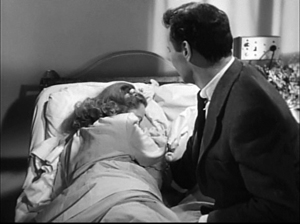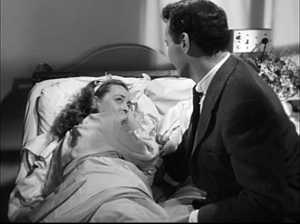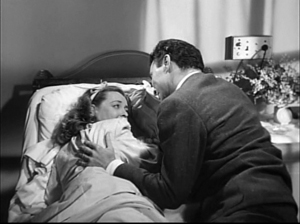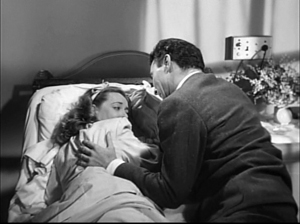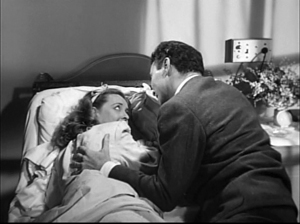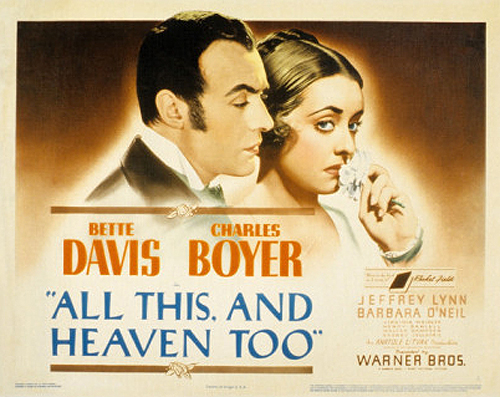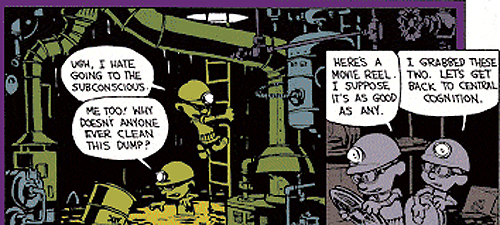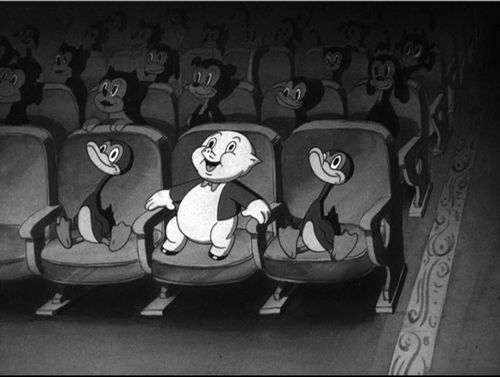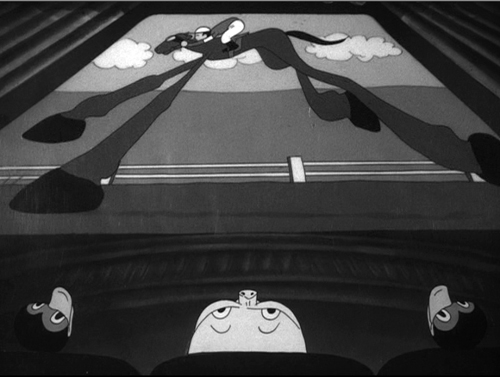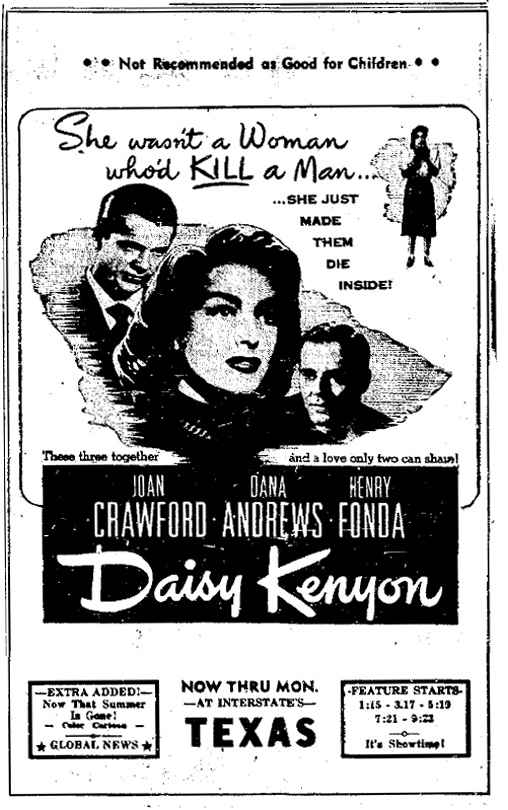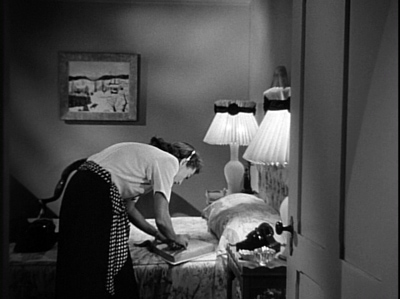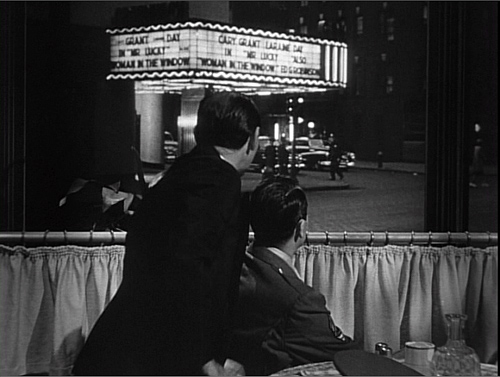Archive for the 'Film theory: Cognitivism' Category
COGNITIVISTS STORM BIG APPLE! BIG APPLE ASKS, “WHAT’S A COGNITIVIST?”
The final SCSMI 2012 banquet, held on the tenth floor of the NYU Kimmel Center for University Life, Rosenthal Pavilion.
DB here:
Most years I offer an entry recording some events at the annual meeting of the Society for Cognitive Studies of the Moving Image. We did hold our conference–and a swell one it was, starting Wednesday at Sarah Lawrence College and wrapping up at the Cinema Studies department of New York University last Saturday. I heard many excellent papers and panel discussions. (The schedule is on a pdf here.) The event was also graced by keynote lectures by Alva Noë and Noël Carroll, and a night of splendid, eye-warping films by Ken Jacobs, no stranger to this blog (here and here and here). Malcolm Turvey of Sarah Lawrence and Richard Allen of NYU did an excellent job of coordinating the SCSMI event.
But I can’t offer my usual conference roundup this time. Kristin and I just got back last night, and we have only three days in Madison before taking off for Il Cinema Ritrovato. In those three days we have a hell of a lot to do, including setting me up for Medicare (!), as I’ll turn 65 during our trip. But I did want to supplement a small runup piece to the conference a couple of weeks back.
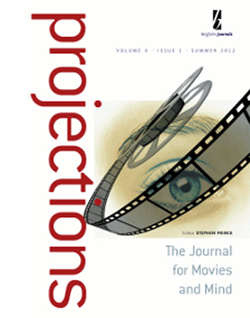 A few days after that post, I received the most recent issue of Projections, a journal with which SCSMI is affiliated. It’s stuffed with worthwhile pieces: Gerald Sim’s overview of the digital revolution (if any) in cinematography; Barbara Flueckiger’s essay, “Aesthetics of Stereoscopic Cinema”; Mark J. P. Wolf’s study of imaginary worlds on film; and James E. Cutting, Kailin L. Brunick, and Jordan DeLong’s correction of one claim they made about shot lengths and film acts. (Kristin discusses their project in this entry from last year.)
A few days after that post, I received the most recent issue of Projections, a journal with which SCSMI is affiliated. It’s stuffed with worthwhile pieces: Gerald Sim’s overview of the digital revolution (if any) in cinematography; Barbara Flueckiger’s essay, “Aesthetics of Stereoscopic Cinema”; Mark J. P. Wolf’s study of imaginary worlds on film; and James E. Cutting, Kailin L. Brunick, and Jordan DeLong’s correction of one claim they made about shot lengths and film acts. (Kristin discusses their project in this entry from last year.)
As if all this weren’t enough, the issue includes a lively and probing roundtable on Continuity Editing, with a superb synoptic article by Tim Smith summing up his eye-tracking research. (His study of There Will Be Blood is our now-classic guest blog.) Tim’s article is an ideal introduction to his wide-ranging research program. Several other scholars comment on Tim’s “attentional theory of continuity editing”: Paul Messaris, Cynthia Freeland, Sheena Rogers, Malcolm Turvey, Greg Smith, and Daniel T. Levin and Alicia M. Hymel. Tim replies to their criticisms in a follow-up piece. This sort of dialogue occurs very rarely in film studies, and it’s to be applauded. I think such serious and courteous exchanges are the mark of a mature, or at least maturing, discipline.
You can learn more about Projections here and read a sample issue here. If your library doesn’t subscribe, maybe you can hint that it should. Although it’s hard to determine the image format of the swirling filmstrip on the cover (image ratio and perfs are puzzling), note that at least it is film.
I learned so much from this year’s get-together that you shouldn’t be surprised if pieces of it float into upcoming blog entries. And in 2013, there’s always Berlin.
From Sam Wass, Parag Mital, and Tim Smith’s paper, “Cutting through the blooming, buzzing confusion: Signal-to-noise ratios and comprehensibility in infant-directed screen media.”
Bette Davis eyelids
Bette Davis, ca. 1950; caricaturist unknown. From Miguel Andrade’s site.
DB here:
Janet Frobisher, mystery writer, has murdered her husband. Naturally, she telephones her lover and asks him to come over. But before he arrives, Janet finds that the runaway George Bates has come calling. George has been her husband’s partner in bank fraud, and now they’ve gone further. They robbed the bank at gunpoint, and a policeman was shot. George faces Janet and demands to know where her husband is.
Nobody is likely to call Another Man’s Poison (1952) a masterpiece, or an undiscovered auteur gem. (Irving Rapper has, however, signed some better-than-average pictures.) Like many ordinary movies, though, it can tell us some interesting things about cinema if we look closely. Especially when that look takes in Bette Davis.
I had to restrain myself from adding a soundtrack link for this entry. You know the one. The earworm may be at work already. But having you listen while you read would probably only distract from my point.
Eyeball to eyeball
That point is one I’ve made before. We humans are very good at watching each others’ eyes. Evolutionary psychologists debate how that skill might have evolved, but there’s little doubt that we can “mind-read” on the basis of others’ gaze direction and other eye-related cues. Of all the arts, cinema probably has the most powerful ability to galvanize and channel our reactions solely through the way people use their eyes.
But what’s an eye? I argued in an earlier entry on The Social Network that eyeballs as such aren’t very expressive, despite poets’ claims to see the soul there. Dilations are about all you get. The real expressive work gets done by gaze direction, the brows, and the lids. Blinks help too. Lately, watching films from the 1940s and early 1950s for a book I’m planning, I was struck by how the great divas of that era used their eyes.
Consider for example Barbara Stanwyck in the Mitchell Leisen weeper No Man of Her Own (1951). Helen Ferguson has innocently assumed the identity of the dead daughter-in-law of a wealthy family, and she’s torn between revealing her lie and protecting her baby. So in most scenes her look is intent and direct. She uses the screen actor’s usual tactics of steady gaze and motivated blinks, with brows and mouth carrying the emotional impact (below, shocked anxiety; then distress).
Even when she’s thinking, her eyeline remains steady and she doesn’t play much with her eyelids.
What about when Stanwyck is much less innocent, as in Double Indemnity (1944)? Devious as she is, Phyllis Dietrichson meets Walter Neff’s eyes squarely. “There’s a speed limit in this state, Mr. Neff.”
When Phillis isn’t looking straight at Neff, it’s when she’s pretending to be demure and concerned about her husband’s safety—and acting as coy as Brigid O’Shaughnessy in The Maltese Falcon. But once Neff sees through her effort to insure her husband, she glares at him unwaveringly.
Part of Stanwyck’s star persona is the bold woman who responds frankly to whatever is put before her. When it comes to evasive maneuvers, though, there’s Bette.
Putting a lid on it
Publicity photo for Jezebel.
Her eyes are big and can be quite round, of course. They also sit remarkably centrally on her face, thanks to her high forehead; this quality is accentuated when her hair is brushed back, as it often is. What especially interests me today, though, is her eyelids. If Bette rolls her eyes at us in those Warners publicity shots, she can also create hooded eyes that suggest she’s harboring secrets.
Bette has remarkable control of those eyelids; she can close them to a very exact degree. In performance, the slight drooping of the upper lid, combined with a small shift in her gaze and a turn of her head, can shade the line or word she speaks. Add that sullen mouth and her vocal tone and rhythm, and you get a nuanced suite of micro-emotions.
Take the moment in Another Man’s Poison after Janet Frobisher tells George that she’s killed her husband. She rushes into a two shot favoring her as George says: “You could’ve divorced him.” Her reaction is an eye-flick, evading his look but still radiating defiance.
Now begins a series of micro-movements that shift Janet’s reaction away from George. She explains how her husband kept her tied to him. “He/ was/clever”: On each word, her expression, eyelines, and eyelids change minutely. Then she pauses.
“He saw/ to that/ too” gets mapped onto three more changes, with traces of a smirk accompanying an eye-shift on the word “too.”
But Janet isn’t looking straight at George yet. She’s got more to say by way of explaining why divorce wouldn’t work: She and her husband continued to have sex. She puts it more indirectly: “He paid me”—pause when she lifts her eyes to look back at George—“visits.”
This instant of looking sharply back at George, as she had at the start of the shot, drives the point home and becomes the climax of this phase of the exchange. Eyelids, brows, chin, mouth, and gaze have all cooperated in creating an emotional detour away from and back to her questioner. Bette’s tiny side-glances show us a woman thinking and reacting to what she’s thinking, relishing what she’s going to say and then watching the effect of what she says. It all takes eight seconds.
Don’t be the wide-eyed ingenue
You can see the two stars’ technique operating very early in their careers. Stanwyck is the name star of So Big! (1932) and Davis is fifth-billed. Above, we find Stanwyck, playing the nobly suffering mother Selina, using her direct-gaze strategy (though as she ages, the eyes get a little pinched). By contrast, we have Davis as the saucy young illustrator Dallas O’Mara. Selina’s son Dirk asks Dallas why she doesn’t love him. When she answers, William Wellman’s staging gives Davis a little aria of face-time at the piano.
Dallas explains that she’s attracted to men who have confronted the rough side of life. I can provide only excerpts of what is a forty-second shot, full of shifts of head position, facial expressions, and eye movements, complete with finely calibrated eyelid work. The passage reminds us that Davis’ dynamic expressions and eye movements are often motivated by her playing characters full of jittery pep, talking fast and thinking faster. She will even deliver phrases with her eyes closed—here, speaking of men with hands scarred from work and struggle.
As she says, “You haven’t a mark on you, Dirk,” Dallas reaches across to grip his forearm. A new phase of the scene begins, but still with the suite of slight head turns and eyelid action.
Dallas says that if he’d kept on as an architect instead of taking refuge in a safe business job, his face would show it. As in Another Man’s Poison, Davis concludes her monologue by turning to face the man and deliver the final line directly. From early in the scene, however, Dirk has turned his face aside in shame.
Where would his marks of character show? “In your eyes, in your whole being.” She peers up at him, her face closer than at any other point in the scene, and her hand lifts from his arm to accentuate her frank but brutal blow to his pride.
Which makes our last view of her all the more arresting. In the final scene, Dallas meets Dirk’s mother and imagines her as an ideal subject for a portrait. Now the flighty young artist is riveted on the steady, serene gaze of the older woman.
In this climax, Dallas becomes what Dirk has called her—“a wide-eyed ingenue”—but in her rapt admiration she proves herself worthy to be Selina’s daughter-in-law.
Bette, eyeballing us
Now that we know the role Bette’s upper eyelids play, we can appreciate other moments when she milks their effects virtuosically. Go back to Another Man’s Poison. George tells Janet that he has the weapon used in the bank robbery—the pistol that bears her husband’s fingerprints. As George starts his line, she’s taking a drink in the foreground. Lifting the glass, she tips her head back too so that her eyes are just visible under her lids—and they’re looking out at us.
George says, “I’ve got the gun.” Janet lowers the glass, but she keeps it poised. Now her lids and eyelines present her reaction to George’s information that the pistol bears the husband’s fingerprints. You see her thinking about evasive action.
This moment in effect spotlights Davis’ use of her eyes; she’s frozen in place, and they’re the only things that move.
Early in the film, we’re given a sort of primer that trains us to watch Janet/ Bette’s eyelids. The first scene shows Janet making her call to her lover from a phone booth. It’s staged with her in profile, so that her brows and mouth are relatively unmoving and the eyelids, centered in the frame, become quite salient. I won’t try to follow all their tiny fluctuations, in coordination with the chin’s angle and the mouth, but these samples should give you the flavor. (Note the very slight difference between the first and the third image, and the second and the fourth).
A more frontal view of La Davis would have been a more characteristic star introduction, but it’s as if the film is saving her full-face firepower for later scenes.
There’s other evidence that Bette was considered to be able to hold a scene by an eyelash. In Payment on Demand (1951), flashbacks from Joyce and David’s miserable marriage take us to happier days. One scene shows the couple embracing on a hospital bed after Joyce has given birth to their second child.
Joyce learns of David’s plans to move out of town, but she resists and sits upright. This brings her distraught reaction home to us with the now familiar coordination of eyeline, eyebrows, and eyelids with the mouth and shakes of the head—another suite of micro-behaviors I can merely sample here.
But then Joyce relaxes and falls back, hiding her face as the camera cranes up slightly.
Director Curtis Bernhardt has reframed the shot so that as Joyce curls up on the pillow, one eye peeps out. We don’t see her mouth replying to David’s lines, but we get the customary fractional eyelid changes, as in the phone booth scene above.
Eventually Davis moves her shoulder and reveals Joyce’s mouth, but for several seconds we’ve been obliged to follow the small movements of her lids as the only clue to her calming down—and getting her way with David. This is, needless to say, all done without a close-up.
Hollywood cinema is a highly formal cinema, as conventional in some ways as commedia dell’arte. Yet that doesn’t mean it must trade only in gross effects. Admittedly, much of today’s cinema has sacrificed nuance for brute force. All the better, then, that returning to even minor films from the studio era can remind us of how many opportunities the medium affords.
Bette Davis isn’t the only virtuoso performer, of course, and many of her contemporaries show the same kind of gifts, sometimes put to different ends. She offers a convenient illustration of how film actors can cultivate meticulous control over facial regions we don’t normally think about. She makes up for being short and rather slight by playing her face like a chamber ensemble, with every “voice,” eyelids included, contributing to the restless dramatic flow.
Okay, I know: The song was running through your head all the way through. You deserve a break. Go ahead, but you might as well watch something too.
On the evolutionary implications of our eye behavior, see Michael Tomasello et al., Why We Cooperate (Cambridge: MIT Press, 2009). Tomasello argues that the need for social cooperation favored signals of shared attention; to work together, we need to notice things that other people are looking at. He also points out:
All 200-plus species of nonhuman primates have basically dark eyes, with the sclera—commonly called the “white of the eye”—barely visible. The sclera of humans (i.e., the visible part) is about thee times larger, making the direction of human gaze much more easily detectable by others. A recent experiment showed that in following the gaze direction of others, chimpanzees rely almost exclusively on head direction—they follow an experimenter’s head direction up even if the experimenter’s eyes are closed—whereas human infants rely mainly on eye direction—they follow an experimenter’s eyes, even if the head stays stationary (pp. 75-76).
But tracking my eye direction helps you, not me; how could it have evolved? Tomasello hypothesizes that making eye direction salient developed in a cooperative social environment. It’s part of social intelligence, in which mind-reading works to everyone’s benefit in shared tasks.
A vast resource on all things Bette is this site. Some perceptive remarks on her acting style are at Uncle Eddie’s Theory Corner. Jim Emerson offers an interview with Miss Davis in a smoke-filled room, while Roger Ebert presents an admiring appreciation of All About Eve.
An earlier blog entry here reflects on the performance of another sacred diva of the period, Joan Crawford. If you’re interested in a wider account that fits such matters into a broader theoretical perspective, including folk psychology, try this essay.
In cognito (we trust)
From Calvin & Hobbes, 10 April 1994.
DB here:
Every year at about this time, I trumpet the upcoming convening of the Society for Cognitive Studies of the Moving Image. This year’s powwow is held at picturesque Sarah Lawrence College, under the auspices of Professor Malcolm Turvey, no stranger to this blog. The final day of it will take place at NYU’s Cinema Studies Department. I had to miss last year’s conference for health reasons, but I’ll be there this year with a paper on 1940s Hollywood narrative.
Some earlier blog entries sketch out my take on what’s interesting about the group’s work. You can find treatment of the 2008 Madison gathering here and here; the 2009 Copenhagen event here and here with an epilogue about Lars von Trier and Asta Nielsen; and afterthoughts on the 2010 Roanoke meeting here. Last year, because I couldn’t go, I offered a web essay, here. This discusses my current thinking about the cognitive research framework.
This year, although I’m going, I’m again offering a new web essay. It’s about how models of mind (Gestalt, psychoanalytic, cognitive, etc.) have shown up in film theory and criticism. The piece is organized chronologically, and it tries to tie ideas about the psychology of cinema to a history of filmmaking: the theories I discuss emerge as responses to changes in form, style, and theme. The essay will eventually be reprinted in Art Shimamura’s anthology, Psychocinematics: Exploring Cognition at the Movies, forthcoming from Oxford University Press. Art’s collection gathers many cutting-edge essays from SCSMI members.
A sideways note: I learned recently that my old book, Narration in the Fiction Film (1985), sold 470-some copies last year. That’s a lot for an old academic study, especially one with many used copies in circulation. I infer from this (good cognitivists make inferences) that some instructors are using it in courses. I’m grateful, naturally, but I want to signal that I’ve altered some of the views I expressed in that book. If a professor is using my book to exemplify the cognitive perspective on narrative, I’d urge him or her to consider as well the web essay I already mentioned, “Common Sense + Film Theory = Common-Sense Film Theory?” In addition, my most recent answers to questions about filmic storytelling, in which narration is treated as one aspect of a larger process, can be found in “Three Dimensions of Film Narrative,” in the collection Poetics of Cinema. In other words: I hope I’ve learned something since 1985.
The week following the SCSMI gathering, UCLA is hosting Visual Narrative: An Interdisciplinary Workshop on 20-22 June. This very promising event hosts presentations and commentaries from linguists, philosophers, and a couple of SCSMI star psychologists. Dan Levin has already made appearances in this blog (notably here), and Tim Smith, Continuity Boy, has contributed our perennially popular guest entry, “Watching You Watch THERE WILL BE BLOOD.” The distinguished philosopher of art George Wilson, author of Narration in Light, will also be there. Thanks to Rory Kelly, one of the Workshop’s organizers, for tipping me off.
After SCSMI (from which, or about which, I hope to blog), we’re off to Bologna, so expect more of our usual reportage from Cinema Ritrovato, that frenzy of movies and movie lovers. Coming up next, though, there’s Bette Davis to reckon with.
Cognition is important, but so is perception, as every front-row sitter knows. From The Film Fan (1939, Warner Bros., Bob Clampett).
Despoiling the movies
The Denton Record-Chronicle (28 December 1947).
DB here:
The last line of Otto Preminger’s Daisy Kenyon is “When it comes to modern combat tactics, you’re both babies compared to me.” If you haven’t seen the film, does knowing that ruin it for you? Suppose I went further and identified the character who spoke the line, or the immediate circumstances, or the action leading up to it? Would knowing these things ruin your pleasure? Or would it give you a different sort of pleasure?
Who doesn’t come to Casablanca knowing about “Here’s looking at you, kid,” or “Play it, Sam,” or “Round up the usual suspects”? You likely saw the ending of King Kong in compilation films before you saw the whole movie, yet you probably still watch it with enjoyment. I saw Potemkin’s Odessa Steps sequence many times, on an 8mm reel I bought as a kid, before I saw the whole movie. I still enjoy Potemkin, possibly more than many who see it for the first time. Yet people complain about trailers that tell too much, and critics who give plot twists away. Accordingly, it’s been a convention of fan and Net writing that if you’re going to give away major story information, you alert readers with the word “spoiler.”
Surely people want to know something about a film’s story. Viewers clamored for the most basic information about Super 8. And evidently many moviegoers would feel less disgruntled about The Tree of Life if they had known in advance a little bit more about what they would encounter. It seems we want to know about the story’s basic situation, but not too much about how things develop. Say: bits from the first half-hour or so, up to the beginning of the Second Act (or what Kristin calls the Complicating Action). Beyond that, we want things kept quiet. Above all: Don’t tell the how things turn out in the end.
I’ve been driven to think again about spoilers after Jonah Lehrer reported on an experiment with literary texts. On the whole, readers in the study reported enjoying a short story somewhat more if they knew the ending in advance. Jim Emerson has provided his characteristically stimulating commentary on this finding, and his readers, surely among the most reflective in the online film community, have supplemented his thoughts.
This discussion overlaps with a question I raised a while back on this site. How can we feel suspense if we know a story’s outcome? One standard answer, which would apply to spoilers too, is that even with foreknowledge, we’re interested in how that turn of events comes about. This possibility is invoked by some of Jim’s readers, and it seems plausible, especially if one is a connoisseur of storytelling. How, we ask, does the narrative engineer this or that twist?
My further proposal in the blog entry was that our mind’s intake of narratives is modular in some respects. Part of us reacts as if we were encountering the events fresh, without knowledge of what is coming up. The analogy was to standing on a balcony overhanging a precipice. You know that you cannot fall, but when you imagine yourself falling, you feel a twinge of fear all the same.
The same might be true of consuming a narrative. One of our mental systems, fast but fairly dumb, reacts to things as they come, while secure knowledge hovers more distantly in the background. I suggested as well that the way that something is presented–say, with fast cutting or sweeping music–can override our knowledge and kindle a basic, more visceral response.
Today’s entry tackles the matter of foreknowledge from a different angle. It’s worth remembering that many people who went to the movies in the 1920s through the 1950s willingly subjected themselves to spoilers.
This is where we came in?
Chicago Daily Tribune (4 January 1948).
While the American studios developed their storytelling strategies in the 1920s and 1930s, movie exhibition became a big business. In 1935, eighty million Americans went to the movies every week. The historical high point was 1946-1948, when annual attendance hit 4.7 billion. But how did all those people see the movies? More specifically, did they watch them from start to finish?
We’re so used to showing up at a definite time for a screening that it’s hard to imagine a period when many viewers would simply drop in to what were called “continuous admissions” or “continuous performances.” In major cities, the film programs, complete with newsreels, cartoons, trailers, other shorts, and even a second feature, would run steadily with only brief intermissions. You could drop in any time.
When the houses filled up, prospective viewers would have to wait in line outside or in the lobby until someone left. Then an usher would show the next patron to the empty seat. Meyer Levin’s novel The Old Bunch describes a group of friends waiting forty-five minutes before just getting into the lobby of a Chicago theatre in the 1920s.
Some of the viewers would depart during the main or second feature. Naturally, the patrons admitted in medias res would see the end of a movie before they caught up with the beginning, perhaps some hours later. Hence the phrase, “This is where we came in,” meaning, “Now we’ve seen the whole picture and can leave.”
After Kristin, Janet Staiger, and I wrote The Classical Hollywood Cinema, a few readers asked why we hadn’t talked about continuous admissions. The practice would seem to explain a lot about the redundancy of Hollywood storytelling. Hyperexplicit exposition, the Rule of Three (say everything important thrice), and the habit characters have of reminding us of their relations to each other (“Gee! You’re the swellest sister a guy ever had!”)—all this would seem to be aimed at a viewer who might well have come in halfway through and need orienting to basic plot premises.
We knew about continuous performances, of course, but we didn’t discuss them because we could find no evidence that filmmakers took these conditions into account when designing their stories. In reading Hollywood screenplay manuals, technical journals, and the like, I didn’t find anyone commenting on the exhibition practice. My colleague Lea Jacobs, who has scanned Variety very comprehensively for the 1920s and 1930s, can recall no mentions of it affecting production policies.
When you think about it, screenwriters and directors couldn’t really do much to bring a latecomer up to date. You can’t keep reiterating story premises and recapitulating all that went before, and still move the plot forward. Better to tell the story straightforwardly and assume, as a default, that under ideal circumstances people would see the whole film from scene one onward. The same assumption governs TV writing, despite viewers’ channel surfing and foreplay with the remote.
Still, during the Golden Age of Hollywood a significant population consumed movies knowing how the story turned out before they saw the beginning. Ask people of my generation or older, and you’ll usually hear: “Oh, we went whenever we wanted. We never tried to find the showtimes.” My childhood moviegoing memories are dim, but I recall being dropped off at the Elmwood Theatre by my parents when they went to town. I’d go in during the movie (I do recall The Sad Sack, 1957) and watch until my mother or father fetched me out. It’s very likely that adults drifted in at odd times as well.
There’s harder evidence that some people preferred convenience to coherence. In 1950 Twentieth Century-Fox announced that All About Eve (1950) would be screened only in “scheduled performances.” No one would be seated after the film began. Premiering at Manhattan’s Roxy Theatre, Eve ran for a week under the new policy. It failed. People hadn’t heard about the new rules, showed up late, and weren’t admitted. The results were angry lines outside and empty seats within. The practice was halted and Eve screened in continuous performance. The Hollywood Reporter attributed the failure to “the public’s deeply ingrained habit of going to a movie show at any desired hour, when most convenient or on impulse.”
In other words, many people were encountering what we call spoilers all the time, and it didn’t seem to bother them. So you wonder: Is watching a movie straight through, as we mostly do today, a newer, more “disciplined” mode of consumption?
It’s showtime
Daisy Kenyon.
It’s obvious that the custom of just dropping in didn’t guarantee a nonlinear movie experience. With a double-bill house, even if you dropped in arbitrarily, you would see one feature or the other in a single gulp. And assuming a three-hour program and a 90- or 95-minute A picture, your odds of walking in during the shorts or the B film were about fifty-fifty.
But were people obliged to drop in willy-nilly? Could they have seen the movie straight through if they wanted to?
There’s considerable evidence that parts of the audience did want to see the movies in linear fashion.Consider the early attenders. And many cinemas filled up quickly just before the show started. Coming in when the theatre opened seems a fairly clear indication of wanting a linear experience. True, early attenders would probably have to sit through a newsreel, trailers, and other shorts, but many people enjoyed those too. Further, since double-bill houses screened the A picture first, knowing that custom could guide your decision about when to come in.
Could patrons have gained specific information about when the movies were screening? There’s a widespread belief that theatres didn’t publicize showtimes. But that’s not the case.
First, the box office almost always posted a schedule breaking down the program. Sometimes cardboard clocks with movable hands indicated showtimes. Patrons might see the schedule when they arrived, or while passing the theatre during the day. Knowing the schedule, you didn’t have to go straight in. If you bought your ticket while the feature was running, you could linger in the lobby. Probably some viewers were reluctant to enter if the feature they wanted to see was just ending.
Second, there were newspaper advertisements. This evidence is varied and intriguing, full of unexpected quirks. First, I took a look at late 1940s ads for the Elmwood, my hometown venue. These ads are mostly bare-bones. They list the movies, all double features, with three changes a week (films played Friday-Saturday, Sunday-Monday, and Tuesday-Thursday). The theatre doesn’t supply its phone number, probably because many families in our area didn’t have phones until the late 1950s. Showtimes are seldom mentioned. Doubtless townfolks knew by local custom what the showtimes were, and there was no need to advertise it in newspapers or handbills (which were still around in the 1950s). One September 1949 item specifies opening and closing hours:
Matinees Daily 2:00
Evenings 7:00 to 11:30
Sundays and Holidays Continuous 2:00 to 11:30
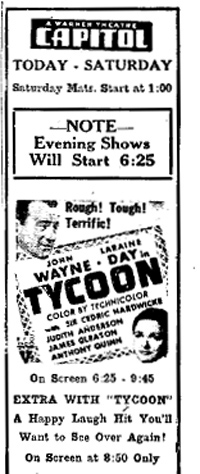 Knowing these hours of operation, people who wanted to see the movies straight through could show up at 2:00 or 7:00.
Knowing these hours of operation, people who wanted to see the movies straight through could show up at 2:00 or 7:00.
But some ads in other towns get a little more specific. “2 COMPLETE SHOWS 9:30 & 12 MIDNITE,” blares the Colonia of Norwich, New York in 1947. This indicates the starting times for the newsreel, cartoon, and ads, which all preceded the main feature. But since many theatres began their screening at 6:00, the accompanying ad from the Capitol, of Dunkirk, New York in 1948 seems to be saying that after all the shorts and ads, Tycoon hits the screen at 6:25. That movie ran a little over two hours, so there was time for filler leading up to the Happy Laugh Hit (presumably a revival). More unequivocal is the ad for Daisy Kenyon at the very top of this entry, which specifies when the feature starts. Again, the theatre probably opened at 1:00 and brought in the evening crowd at 7:00. That left fifteen minutes or so for pre-show material, including the color cartoon and “Global News”.
In short, some newspaper ads tell us only the theatre’s operating hours, while others specify showtimes. This sort of variation goes far back. The Olean (New York) Evening Herald advertised the Strand Theatre as “showing continuously 1 to 11 daily,” with no showtimes mentioned. On the same page we find specific starting times listed for a rival theatre’s showings of Fairbanks’Mark of Zorro (1921).
For special occasions, the scheduling could be quite exact. If you happened to be in Middletown, New York, on New Year’s Eve of 1947, you could welcome in “Kid 1948” at a gala show starting at 7:00 and ending “some time in 1948.” But not just “some time”: The State’s plan has a military precision.
Daisy Kenyon at 7:00 – 9:29 – 12:01
Comedy “Skooper Dooper” at 8:38 – 11:08
Terrytoon Cartoon “Silver Streak” at 9:12 – 11:42
Community Sing at 9:19 – 11:49
Latest Pathe News at 8:56 – 11:26
The ad goes on:
No seats reserved – No waiting in line. Come any time from 6:30 until 11:20 and see a complete show—Stay as long as you like! Come in one year—Leave the next!
The rival Goshen Theatre likewise provided a detailed schedule of its New Year’s Eve attractions, an astonishing four features plus cartoons. The show, broken into 9 “units,” started at 7:00 and ended at 1:00 in the morning, concluding with an “Exit March.” Why don’t movie theatres have exit marches any more?
Apart from ads specifying showtimes, we can glean other hints that at least some viewers preferred to know when to arrive to catch a film from the beginning. Some newspapers published lists of starting times. The New York Evening Post printed an extensive “Movie Clock” covering over eighty theatres. A Schenectady paper did the same thing under the rubric “Showing Today. What the Theatres Are Advertising.” You can find a similar feature in papers from Portland and Council Bluffs. Movie houses were often a small-town newspaper’s biggest and most reliable advertising source, so many editors were ready to oblige theatre managers.
Movie ads also sometimes included the theatre’s phone number, so people could call to check showtimes. Access to telephones was still spotty then; recall that the infamous Gallup Poll of 1948 misjudged Dewey’s chance for victory, partly by relying on phone surveys. But by 1945 there were about 16 million residential phones for a population of 140 million, so the middle-class people sought by exhibitors, then as now, might well be able to call up the movie house.
That is, in fact, what Daisy Kenyon does at one point in her movie. Having decided to go out with her girlfriend, she checks the phone number of the theatre she wants to visit and starts to call to check on showtimes. (She’s interrupted by a call from the mysterious Peter Lapham.) The scene seems to model one set of urban filmgoing habits.
Historian Douglas Gomery reminds us that there were many different sorts of theatres–first-run and subsequent-run, big downtown houses and neighborhood venues, rural ones, art houses, and so on. I’ve tried to capture some of this variety in my exploratory sample, but there are many fine-grained differences. Moreover, roadshow pictures often played to strict schedules, selling tickets for specific performances, and people adjusted their schedules to that regime for Gone with the Wind and other blockbusters. Perhaps the All About Eve fiasco came from people thinking this new film, in black-and-white and offered at regular admission prices, was not an event film like the usual roadshow attraction.
In all, it’s hard to generalize about viewing patterns. But it seems fair to say that in many circumstances viewers could, if they wanted, avoid seeing a movie’s ending before the beginning.
Which means that, then as now, we find different viewing styles. Today we have the Planners, who Tivo their cable television offerings, and the Grazers, who hop from channel to channel and watch in medias res. (We also have the Gleaners, who sample items at their leisure via the net. But there doesn’t seem to be an equivalent option in classic theatrical film viewing.) Several of Jim Emerson’s cinephile readers point out that they appreciate spoiler alerts in a web review because they want the choice between knowing and not knowing. It seems that in many circumstances movie houses offered 1940s viewers that same option.
Exhibition history is far from my specialty, so I’d welcome information from researchers who’ve studied this question more systematically. In the meantime, I’m grateful to Kristin, Ben Brewster, Lea Jacobs, Vance Kepley, Betty Kepley, John Huntington, and Virginia Wright Wexman for discussion with me. A special thanks to Douglas Gomery, who shared detailed information in emails and phone conversations.
For a comprehensive history, see Douglas Gomery, Shared Pleasures: A History of Movie Presentation in the United States (University of Wisconsin Press, 1992). See also Gregory A. Waller, Moviegoing in America: A Sourcebook in the History of Film Exhibition (Wiley-Blackwell, 2001) and Going to the Movies: Hollywood and the Social Experience of Cinema (University of Exeter Press, 2007), ed. Richard Maltby, Melvyn Stokes, and Robert C. Allen. Allen has mounted a beautiful online archive devoted to moviegoing in North Carolina.
A useful older source, though not focused on the 1940s, is Frank H. Ricketson, Jr., The Management of Motion Picture Theatres (McGraw-Hill, 1938). Ricketson advocates three hours as a maximum program time.
The motion picture theatre has a constant drop-in trade, and the patron who catches the feature after it has started does not want to sit through a seemingly endless program to see the part that he has missed. The tendency today is to present shows that are too long (p. 121).
It’s possible that as an employee of Fox Theatres, Ricketson was pushing the then-common industry view that double features were undesirable. Fewer films on the bill allowed more turnover during the day and favored the higher-profit A pictures.
Information about All About Eve‘s “scheduled performance” policy comes from the American Film Institute Catalog. See also “Business on ‘Eve’ at Roxy Jumps After Scheduled Showings Cut,” Boxoffice (28 October 1950), 50, available here. Linda Williams argues that Psycho‘s exhibition policy helped create the custom of consuming a movie straight through. See her “Discipline and Distraction: Psycho, Visual Culture, and Postmodern Cinema,” in “Culture” and the Problem of Disciplines, ed. John Carlos Rowe (Columbia University Press, 1998).
My analogy to standing on a precipice comes from Noël Carroll’s The Philosophy of Horror.
Two final points I couldn’t squeeze in elsewhere. First, to a large extent, spoilers are a function of different sorts of movie talk. In daily conversation, we’re reluctant to tell too much to friends who haven’t yet seen the film. Journalistic film reviewers seek not to reveal the ending, of course, but they’re also obliged to write about many scenes in an oblique way. (“After a string of preposterous coincidences…”) Net writers seem to model their comments on conversation and professional reviews, although some rascals delight in telling innocent readers everything that happens. We might call them spoilersports.
By contrast, academic writing assumes that the reader has seen the film, or is willing to let details be divulged for the sake of some larger point. Occasionally bloggers adhere to this standard. Readers of J. J. Murphy’s blog know that he doesn’t refrain from synposizing a plot to give depth to an analysis. I’ve done the same thing here on many occasions, but sometimes I feel the need to signal spoilers, particularly for current releases or films that depend on big twists. For some reason, I think that older films are fair game for full-blown discussion, even though many of our readers are less likely to have seen Enchantment than Source Code.
Second point, pure digression: In 1947, Richard Hull published Last First, a mystery novel dedicated “to those who habitually read the last chapter first.” The opening chapter does provide the story’s ending, but as you’d expect there’s a trick. The chapter is written so obliquely that you can’t really tell who is doing what to whom. At least I can’t.
P. S. 18 May 2012: Two more items that I’ve run across relevant to the this-is-where-we-came-in problem. First, this dialogue exchange from Ellery Queen’s serial-killer novel of 1949, Cat of Many Tails. The murder victim, one investigator says, “left for a neighborhood movie. Around nine o’clock.” The other asks, “Pretty late?” The reply: “She went just for the main feature.” This suggests that in Manhattan, it wouldn’t be impossible to know when the main feature played for the last time–either from the newspaper, from a phone call, or just from custom.
It seems that indeed late shows of the A picture were common. A 1939 Variety article, “‘Bad’ Scheduling Squawk” (27 December 1939, 5, 47) indicates that often the “No. 1 film” was put on at awkward hours, and viewers objected. “Too often, it is declared, a customer will call the theatre, only to learn the film he or she wants to see goes on at a time that interferes with dinner, or it’s on the last show, so late that getting out would be around midnight or thereabouts. Result, under theory, is that the customer doesn’t go at all.” Again, we find some evidence that the public could find out when a movie played by phoning, and that at least some patrons cared enough to see the picture through from the start. This piece from 1939 suggests that these options were available at least in some towns throughout the 1940s. Presumably, this practice was prominent in theatres not controlled by the studios, since the B picture was a flat-rate rental but the No. 1 feature was a percentage booking. The more tickets you could sell for the B, the bigger the exhibitor’s share of receipts.
P.S. 21 May 2012: The Wisconsin Project never sleeps. Alert Ph. D. researcher Andrea Comiskey sends me 1939 ads from the Olympia in Portsmouth, New Hampshire and the Fox in Billings, Montana. Both lists start times for both features, A and B, with the Fox including the start times for cartoons and newsreels too. The heading is, bluntly, “When to Come Today.” As per the above addendum, the Fox runs the A picture last, and quite late (around 10 PM).
P.P.S. 1 February 2021: Ran across this in John O’Hara’s novel Butterfield 8 (1935):
“What are we up to this afternoon?”
“Oh, whatever you like,” she said.
“I want to see ‘The Public Enemy.'”
“Oh, divine. James Cagney.”
“Oh, you like James Cagney?”
“Adore him.”
“Why?” he said.
“Oh, he’s so attractive. So tough. Why–I just thought of something.”
“What?”
“He’s–I hope you don’t mind this–but he’s a little like you.”
“Uh. Well, I’ll phone and see what time the main picture goes on.”
“Why?”
“Well, I’ve seen it and you haven’t, and I don’t want you to see the ending first.”
“Oh, I don’t mind.”
“I’ll remind you of that after you’ve seen the picture.”
Daisy Kenyon. Daisy and her friend, tracked by Peter and watched by a waiter, have apparently gone to a revival house–and one not playing pictures from Fox, the studio behind Daisy.












